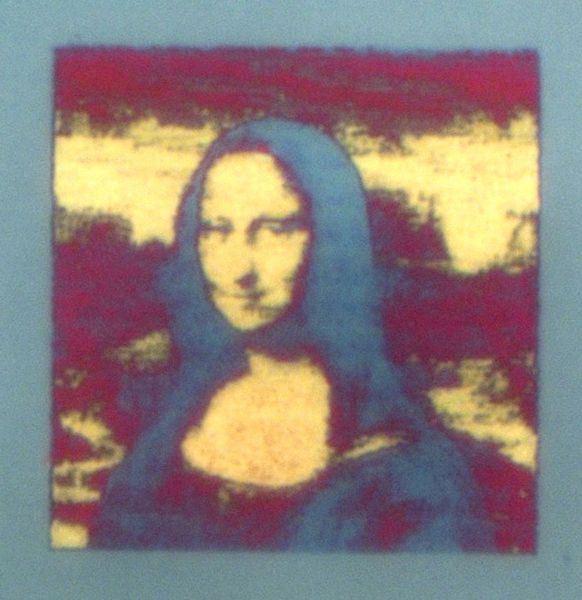A New Color Printing Technique Borrows From Bird Feathers
Structural coloration, like that in peacock plumage, holds promise for images that don’t fade away
/https://tf-cmsv2-smithsonianmag-media.s3.amazonaws.com/filer/42/c5/42c5548e-c44b-4b70-a5a8-b234385aae69/xzhu3hr.jpg)
You never see a faded peacock. The bright, iridescent, green and blue feathers don’t bleach in the sun or discolor over time. That’s because the color all comes from structure, not pigment; the feathers themselves are brown, and it’s the tiny shapes on them that cause light wavelengths to interfere with each other, producing the colors you see.
The phenomenon has been studied for hundreds of years, but over the last decade or so, scientists have started to build this type of colorization into man-made structures, exemplified by a paper published in Science Advances today. Xiaolong Zhu and a team at the Technology University of Denmark developed a method that uses lasers to construct nanostructures out of germanium, which reflect wavelengths of particular colors, and can be used to construct durable color images.
“The most important thing is that we do high resolution laser printing of a lot of colors by a very thin film of germanium material,” says Zhu.
He calls it laser printing, though the basics of structural color feature an array of microscopic columns on a surface rather than what we think of as a normal laser printer. The size and shape of those columns corresponds to the wavelength of visible light in such a way that only certain wavelengths can escape the troughs. Among man-made materials, that substrate is a metal or a semiconductor. In this case, Zhu and his team laid germanium over plastic pillars, becoming the first to build such structures of a semiconductor with no metal mixed in.
This conferred a particular advantage: A high-powered laser, tuned to the right frequency, can selectively melt the germanium. The starting point is a thin film of germanium, stretched over a thin, flexible, plastic surface, with microscopic circular columns extending upward. When the researchers hit the columns with the laser, they melt from a circle into a sphere, which changes the color that the material appears from red to blue. As the pillars are just 100 nanometers wide, the process can provide up to or beyond 100,000 dpi, which is around the maximum resolution theoretically possible for traditional laser printers.
Better still, the degree of melting is controllable too, meaning a half sphere, or a partial sphere, can show a color anywhere on the visual spectrum between the two extremes.
“What they’re really solving here is a key engineering problem that has to be solved for certain applications in structural color, and that is how you can make a system where you can write a pattern into it as different structural colors at different points in the pattern,” says Vinothan Manoharan, a physics professor at Harvard whose lab studies a different means of making structural color based on self assembly of nanoparticles.
Printable structural coloration like these are desirable for their durability. Like the peacock, they won’t fade or bleach.
“It will not fade away for a long time,” Zhu says. “That’s the advantage of this kind of technology. The ink of pigments will fade over time, especially for outside usage.”

While this method requires a material topped by a semiconductor (and not a particularly cheap one, though the team is working on replacing germanium with the more easily available silicon), Zhu says the semiconductor layer is so thin—35 nanometers—that printing on it becomes feasible for many applications. He mentions security and information storage first, because the high resolution and the high information density enabled by coding in color lend itself to these.
A DVD might come with a security pattern, he says. Or, if the circular columns are replaced with square boxes, then the light polarizes in a particular way. Information could be stored, but only retrieved when under the correctly polarized light. This could make its way into watermarks or “ink” for counterfeit protection in currencies.
Don’t look for anything on shelves soon though. Zhu and his team are still trying to solve a tricky but important problem: how to produce green light. Green is in the middle of the spectrum, meaning they will have to develop structures to absorb both blue and red light. They are currently developing more complicated nanostructures to do that, says Zhu.
“They’re going to have to solve some other problems in order to achieve the applications that they wanted to achieve,” says Manoharan. “This is a big field now. There is a lot of work in this space. There’s a wide range of applications for structural color, and that’s kind of the reason why there’s so many different techniques. For this application, my personal opinion is that it’s really good for security inks."